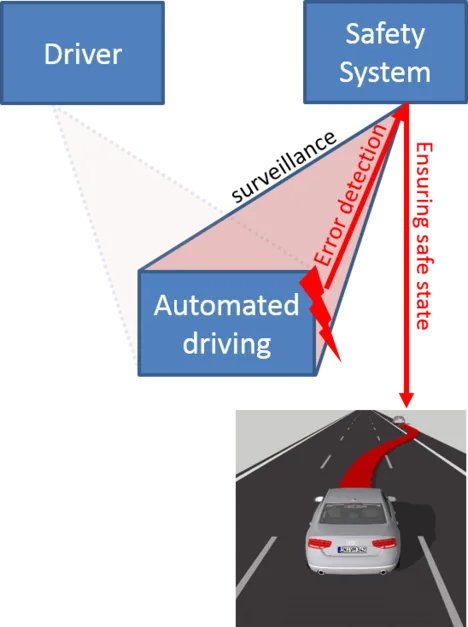
Problem
From automation level 3 (highly automated), there are situations in which the driver can completely withdraw from the driving task. Two important aspects can be derived from this. The lack of driver supervision increases the safety requirements for the system. In return, the entire behaviour of the vehicle can now be actively determined for the first time. The technical system is no longer at the mercy of the driver, but has a great influence on the situations to be handled. However, this also means that one is responsible for all situations one gets into and accordingly has to take them into account as early as possible in the concept phase. These two aspects have a significant impact on the development of HAF functions. On the one hand, novel safety concepts are necessary, especially at higher levels of abstraction such as behaviour generation. And on the other hand, HAF systems have to be developed in a completely new context. In addition to the development with regard to driver interaction, as is necessary for classic driver assistance systems, it is now necessary to design the completely independent behaviour of the systems in automated mode. This raises the question of how HAF behaviour and system boundaries can be systematically defined in the context of scenario diversity.
Goal
In this project, a technique for the systematic specification of the behaviour of HAF functions is to be developed. This includes a systematic procedure, a clear description of the behaviour and a comprehensible evaluation, for which a possibility for structured documentation must be provided. On the other hand, a contribution to more secure and at the same time more user-friendly HAF is to be made through exemplary, technical implementation of individual aspects of the developed behaviour. For this purpose, concepts for behaviour generation and monitoring will be developed and, after a theoretical assessment, implemented and evaluated simulatively or in exemplary driving situations.